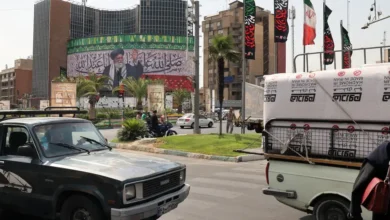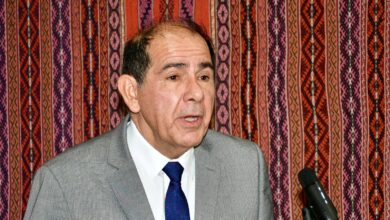Electricity grid under pressure as heatwave pushes load to historic high of 16,350 MW

As temperatures soared to an exceptional 48°C on Wednesday, the Ministry of Electricity, Water and Renewable Energy found itself confronting one of the most critical challenges in recent years.
With the electrical load index peaking at 16,350 megawatts, compared to 13,600 megawatts on the same day in 2024, the ministry resorted to controlled power outages across 30 areas, including residential, industrial, and agricultural zones, to maintain the stability of the national power grid.
Officials from the ministry attributed the surge in consumption to the unprecedented 8°C rise in temperatures compared to the same date last year. Sources explained that each degree rise in temperature correlates with an approximate 343.7 megawatt increase in load, emphasizing the direct link between the heatwave and strain on the grid,reports Al-Rai daily.
“While annual maintenance schedules and consumption projections are prepared in advance, such extreme temperatures this early in the year exceeded all expectations,” said ministry sources.” Temperatures of this intensity are typically recorded in late June, July, or August, not May.”
Despite the strain, the ministry reassured the public that all electricity generation units—except two—will be fully operational by the end of this month.
However, no new generation units have been added since 2021, even though 4,400 MW of new loads have been connected to the grid during that period. This mismatch, officials noted, is a cumulative crisis, not a sudden one.
“The current pressure on the grid reflects years of deferred capacity expansion, not a failure of emergency planning,” sources added.
To reduce the impact of the power shortfall, Kuwait imported 1,150 megawatts—the maximum available capacity—from the Gulf Cooperation Council Interconnection Authority (GCCIA). Concerns about the capability of interconnection lines to sustain such volume were raised but ultimately overcome in this emergency response.
In another bid to manage loads, the ministry utilized the smart meter system to disconnect power from schools and mosques outside active hours. This measure, implemented across Ministry of Education facilities, contributed to easing the strain on the grid.
Officials also confirmed that rationalization proposals are being studied in collaboration with various government entities to curb electricity consumption during the peak summer months.
Simultaneously, the ministry has fast-tracked several major electricity projects, including Al-Subiya Station (Phase IV) – 900 MW; Al-Dabdaba and Al-Shaqaya (Phase III – Project I) – 1,100 MW and Al-Zour North (Phases II & III) – Winner to be announced soon
“These projects would typically take years to initiate,” said sources, “but thanks to swift coordination between the ministry, the government, and the Public-Private Partnership Projects Authority, timelines have been drastically shortened.”
Addressing public questions about why consumption increased on Wednesday compared to the previous day despite the same 48°C temperature, ministry sources explained that sustained high temperatures compound electricity use.
“A one-day heat spike triggers high usage,” they said, “but when the heat persists, consumption intensifies due to cumulative demand from cooling systems, buildings, and infrastructure.”
Several residential areas were affected due to the sudden rise in temperatures including Al Salam, Jaber Al Ahmad, Al Shaab, Hawally Square, Abu Ftaira, Al Rawda, Jaber Al Ali, Jleeb, Salmiya, Andalusia, West Abdullah Al Mubarak, Al Sulaibiya, Al Faiha, Al Firdous, Al Dhaher, Al Naseem, Al Daiya, Abdullah Al Salem, Green Island, Sabah Al Nasser, Al Shuhada, Al Adan.
The industrial areas included Abdullah Port, Subhan, Sulaibiya, Al-Rai, Shuwaikh Industrial and among the agricultural areas were Rawdatayn, Abdali, Wafra.
As Kuwait faces record-setting demand on its electricity infrastructure, the government is balancing between short-term crisis management and long-term strategic investment. With summer just beginning, all eyes are on the ministry’s ability to withstand further heatwaves while accelerating critical projects and enhancing grid resilience.












